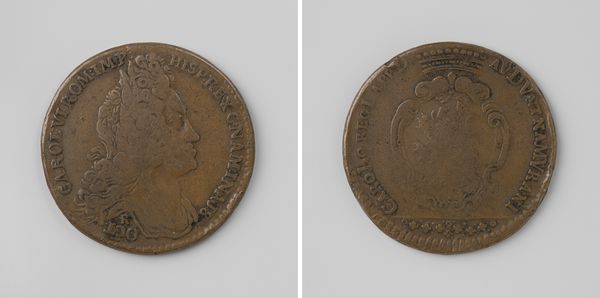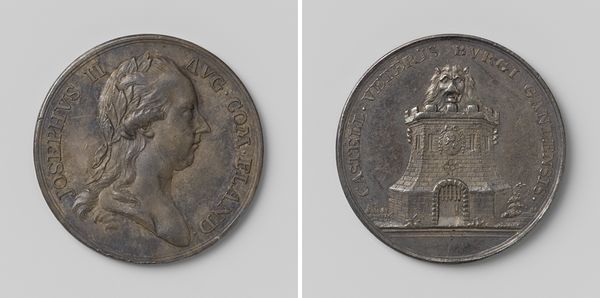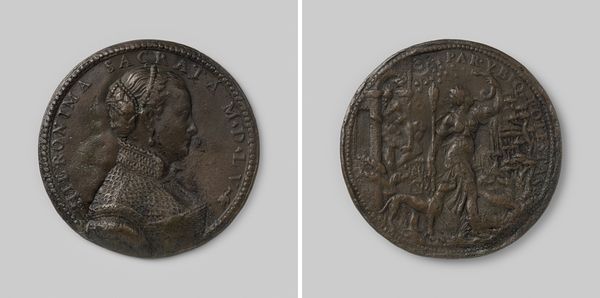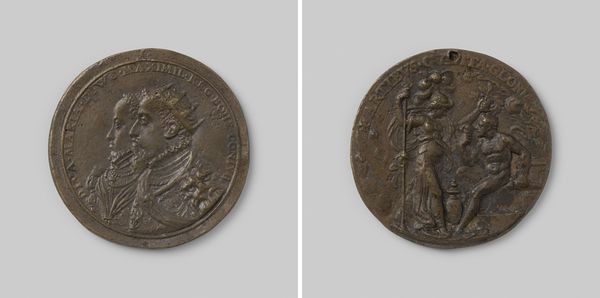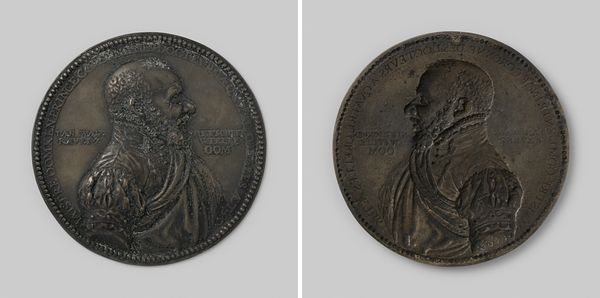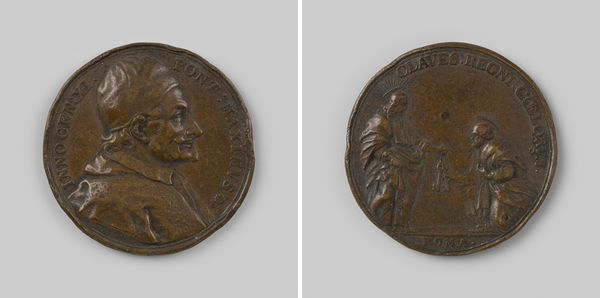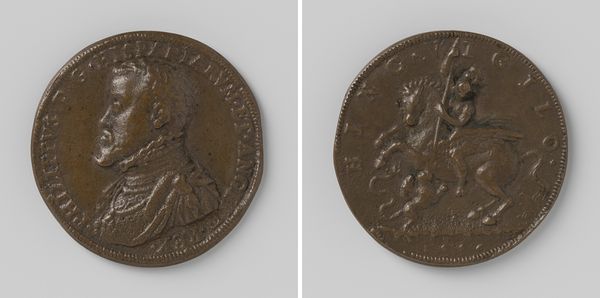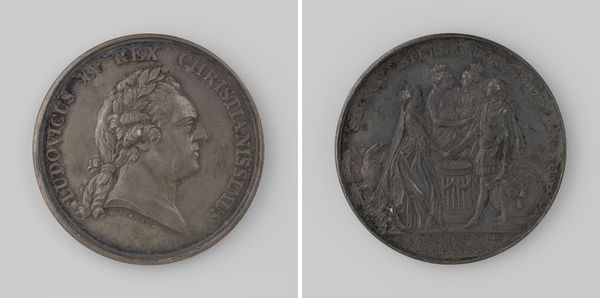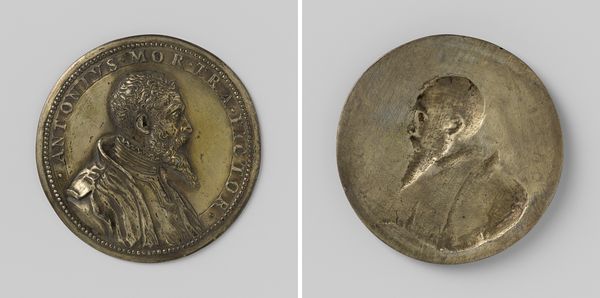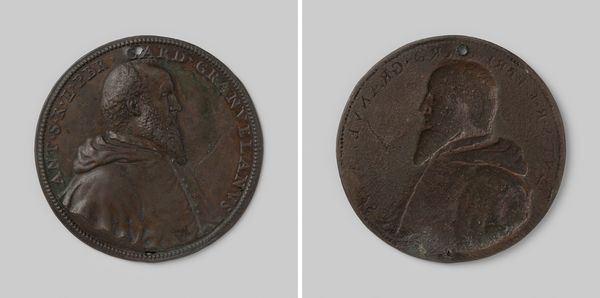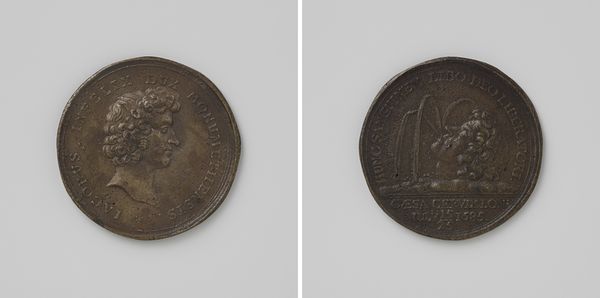
carving, metal, relief, sculpture
#
portrait
#
carving
#
metal
#
sculpture
#
relief
#
ancient-mediterranean
#
sculpture
#
statue
Dimensions: diameter 5.7 cm, weight 55.68 gr
Copyright: Rijks Museum: Open Domain
Curator: This medal, dating back to 1551, is attributed to the Monogrammist FML, also known as Madeilleur. It portrays Pope Julius III. Editor: The relief work is quite striking. The choice of metal—bronze perhaps—lends it a weighty, solemn presence. You can almost feel the pressure and detail worked into this seemingly small token. Curator: Medals like these functioned as tools of diplomacy and self-fashioning. Popes and rulers would commission them to distribute as gifts or tokens of power, thereby circulating their image and authority. Think of them as portable propaganda. Editor: Absolutely. And looking closely at the reverse, the depiction of Atlas holding the globe seems a loaded symbol. The globe appears roughly formed, a crude thing to bear on one’s shoulders, while Julius, on the obverse, gets associated with the heroic weight. Who did the crafting here and under whose power? Curator: The artist's identity remains somewhat enigmatic, adding to the object's mystique. The choice of classical imagery, however, points to the influence of Renaissance humanism and the revival of classical ideals. Editor: There is also, of course, the more basic practicality of working with such hard materials, cutting metal. What kind of labor did such craft require at the time? Consider how many hands were involved beyond the named artist in realizing Julius’ ambition. Curator: The inscriptions around the portrait serve to reinforce his legitimacy and role. We must remember that in this era, imagery was meticulously controlled and laden with significance. Editor: This reminds me how the seemingly straightforward function of an object of prestige is also wrapped up with the everyday toil of workers in workshops and a world where artistic labor isn't as detached or solitary as the academy might have it. Curator: Indeed. It's a powerful artifact that offers a glimpse into the social and political dynamics of the Renaissance papacy, but it's important to realize its physical creation speaks equally eloquently of social relations, too. Editor: Precisely. Beyond the portraits, examining the bronze casts brings questions of production, class, and context to the forefront and it speaks volumes beyond mere aesthetic or political preference.
Comments
No comments
Be the first to comment and join the conversation on the ultimate creative platform.
